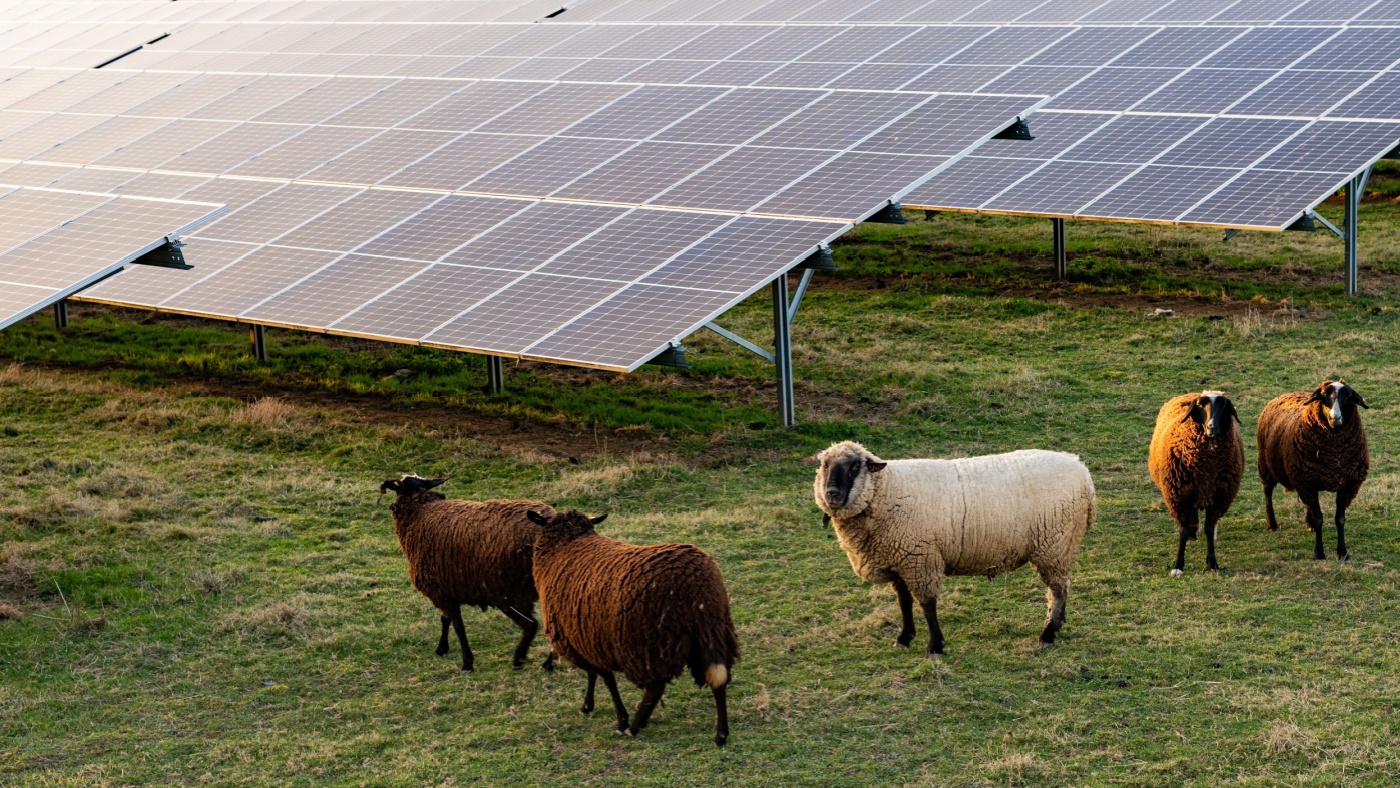Until recently, I had never heard the term, even though farmers had actually been doing this now for years. It’s agrivoltaics, or the practice of solar agriculture co-location as defined as ag production underneath or adjacent to solar panels. The subject received plenty of attention at a recent solar farm summit in Chicago. Bill Bodine is the Illinois Farm Bureau Director of Business and Regulatory Affairs, and he was there.
“This is a concept where, when solar farm development occurs, that there would be an effort to try to maintain some form of agricultural production within the footprint of the solar farm. So some of this is already occurring, and this is a concept that I’ve been looking into for the last probably two or three years, and in fact, have been aware of and providing some outside advisory work to a research project at the University of Illinois on agrivoltaics, but there’s a lot of work right now on as an example, grazing sheep within the footprint of a solar farm. There was talk at this conference about projects being specifically designed to allow for the grazing of cattle, possibly haying within the footprint of the solar farm, and then even some potential for crop continued crop production in between the the arrays of panels within the footprint of a solar farm. So it’s an interesting concept, and one I think, you know there could be some opportunities, still, some development work to go on in this space, but I think there could be some development opportunities for for members going forward.”
Bodine says the key is dual use, and whether you can add a solar farm without losing significant land for production.
“One of the criticisms of solar farm development, and one of the concerns that we hear from some of our members, is that, obviously these projects are taking land out of production. You know, we have the Illinois Farm Bureau has a policy where we would support efforts to locate them on underutilized lands, non tillable properties, those kind of kind of things first prior to going to tillable properties. And so this may be a way to minimize that negative impact on on highly productive farmland. That would be, you know, could the entire footprint could be taken out of production for a solar farm project, but in this instance, you may be able to continue some form of production in between the solar arrays. So, it’s a way to try to kind of address some of those concerns and have a dual use of the property rather than a single use.”


